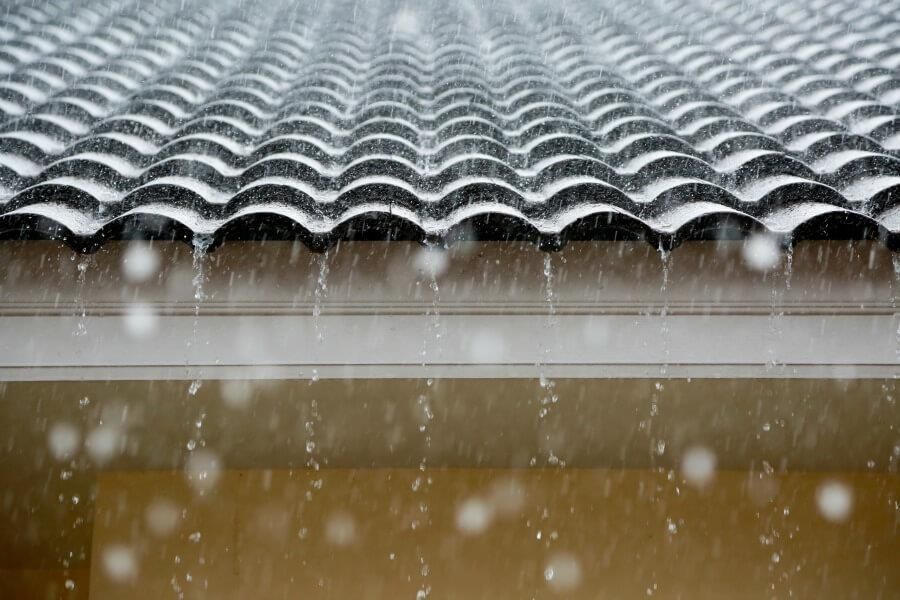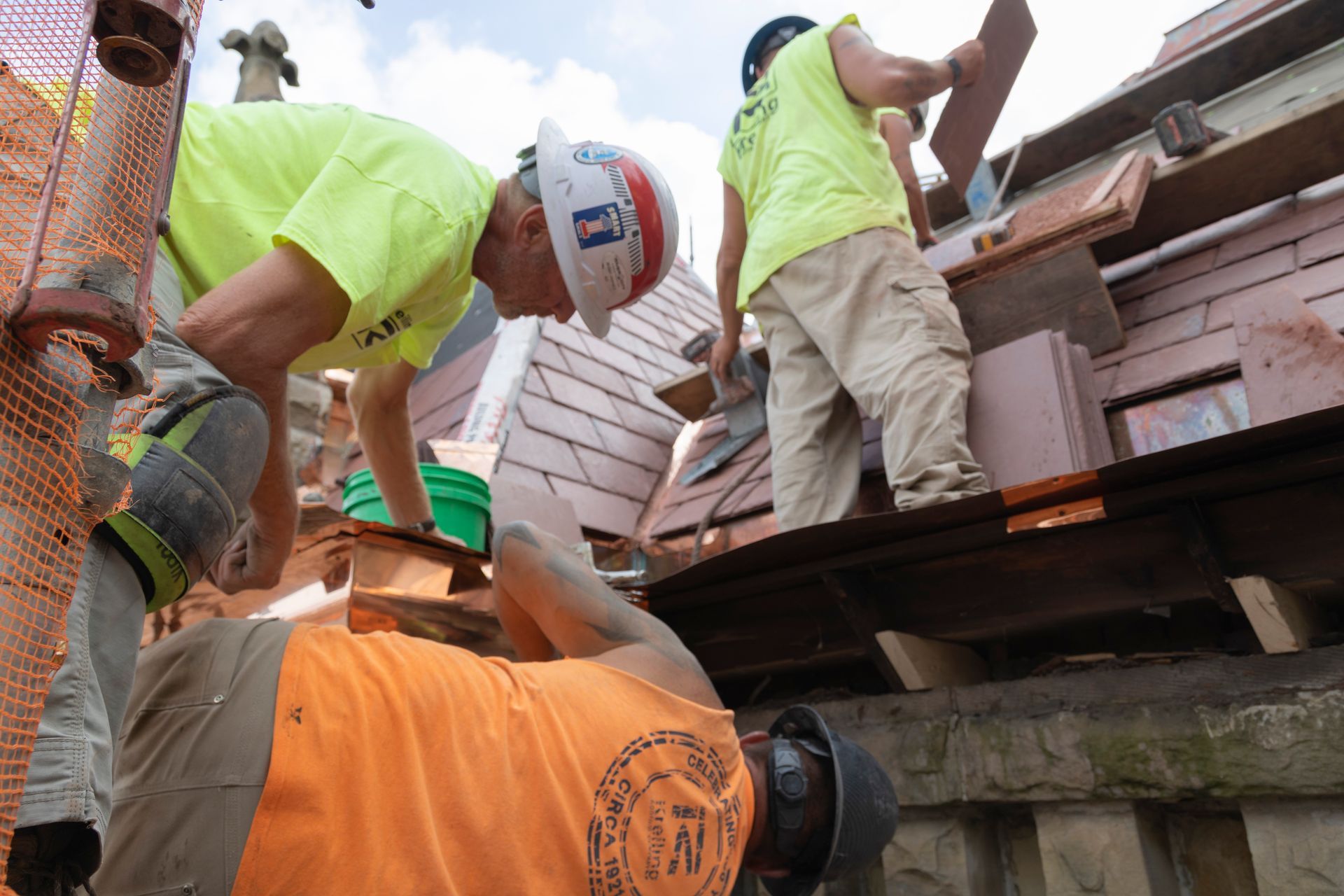
April showers may bring May flowers, but sometimes summer hail brings the need for a Kreiling nail!
Thank you, thank you, I’ll be here all week! Jokes aside, hail storms can bring massive headaches to homeowners who are left picking up the pieces. After all, how many of you actuallyknowwhere to find your Homeowners Insurance policy, let alone have read it from cover to cover?
A recent study performed by an analytics firm, Verisk, found that Illinois ranked 2ndin the nation with the most hail storm claims, affecting nearly 24% of all properties in the state. That means that 1 out of every 4 of you who read this post will have to deal with the headaches of hail damage in the near future. Are you ready? No worries, we’re here to help you navigate the process.
Step 1: Know Your Coverage
Knowing what your policy covers is an important first step, and it’s one many homeowners skip in lieu of a conversation with their insurance agent. Insurance agents are a great ally, but ultimately, they work for the same company whose own self-interest is to compensate you as little as possible for the damage to your home. Armed with the knowledge of the coverage in your policy helps you be better prepared for that conversation and ask better questions.
Recently, many insurance policies have added limitations and exclusions for wind/hail damage and most companies require claims to be filed within one year of the storm (not one year from the discovery of damage). Thanks to large storms like Hurricane Katrina that caused insurance companies to suffer massive losses, another recent change in many insurance policies is the exclusion of cosmetic damage from coverage. While the exclusion itself makes sense, it has actually created a loophole that many insurance companies use to get around paying for damage claims. This type of avoidance is often seen with minor divots to shingles, dents on roof vents and other metal surfaces that the insurance company claim to be cosmetic damage. In all actuality, depending on the size, dents and divots can impact the overall structural integrity and functionality of the system – after all, there’s a reason the manufacturer designs the product withoutdents and divots. Depending on of the age of your roof, you also most likely won’t receive a full replacement value since the actuaries for the insurance companies are always busy behind the scenes crunching depreciation factors to reduce your payout.
Bottom line, don’t be afraid to challenge your insurance agent or adjuster on coverage. After all, the only one looking out for your best interests is you. That brings us to our next point…
Step 2: Identifying Damage
This step may seem like the easiest to do, but in reality, this is the part of the process that can sometimes cause the most headaches. Insurance companies are often reluctant to send adjusters to clients who are not sure there is damage, but want to receive confirmation. As a result, homeowners are often advised to call a roofing contractor to inspect the roof first and if damage is present, then the adjuster will come to the house to assess the roof.
Unfortunately, the roofing contractor’s opinion of damage has very little valueto anyone but the insurance company’s bottom line. It’s not uncommon for a roofing contractor and an insurance adjuster to arrive at a differing opinion on the damage of the roof. Insurance adjusters do not take into account the roofing company’s assessment of the roof, and in order to issue a payment for the claim, the adjuster must see the damage for himself or herself. This means the customer can end up with an unnecessary hail inspection invoice from the roofing contractor without gaining anything other than helping the insurance company vet their potential claims.
Step 3: Negotiating
Beware of roofing contractors who claim to negotiate with insurance companies on your behalf. In fact, warning flags should go up in your brain any time a company claims to be able to offer a free roof replacement not subject to your deductible. Both practices are illegal in Illinois!
Did you know there are websites that track hailstorms and give contractors a heads up on areas to target hail inspections and roofing sales? That’s why neighborhoods are often canvassed by contractors (or high-school kids hired at minimum wage) going door-to-door soliciting work by claiming your roof has damage and they can help you get a free roof replacement.
There are only two people who can negotiate your roofing claim with your insurance company – the homeowner and a public adjuster licensed in Illinois. Let me say this in a slightly different way because it’s extremely important. It is illegal for anyone to negotiate a roofing claim on behalf of a homeowner, unless it is a public adjuster licensed in the state of work.
Public adjusters licensed in the state of Illinois can be hired to represent you, if you feel your insurance company is being unfair, but a roofing contractor can not and should not negotiate on your behalf.
Step 4: Choosing a Roofing Contractor
This is an easy one – choose us! We’d be remiss if we said we wrote this post for any reason other than to earn your business. With that said, the purpose of this blog and the “roof education” section of our website is provide our customers with a safe source of information for all things roofing. The goal is to provide you with the tools you need to come to a decision by yourself. We believe that by educating people on the right way to do things, Kreiling Roofing will emerge as the clear choice to be your preferred roofing contractor.
By now you’ve navigated your way through the claims process and you’re finally ready to get work done! How do you decide which of those google results will give you a fair price and get the job done right the first time? The National Roofing Contractors Association (NRCA) has ten guidelines they recommend consumers to considerbefore choosing a roofer.
You can read their post, but the general idea is to do your homework ahead of time and research the company (besides, by now you’re basically a professional researcher!) before hiring them. The best way to do this is by verifying the contractor has a valid roofing license, insist on seeing copies of their certificate of liability insurance and workers' compensation certificates as well as read reviews of the company on Google or social media to verify their going concern.
So why is this so important? Think back to that pesky Homeowners Insurance policy you read before opening your claim. Do you remember what it covered (or didn’t cover) in regards to contractor’s getting injured on your property and/or causing damage to your neighboring properties? Chances are that you will be held financially liable for your contractor’s negligence in both situations. By choosing an unlicensed and uninsured contractor, you might save a buck or two, but you’re exposing yourself to far greater downside should something happen (and accidents happen every day).
We’re Here to Help!
Most importantly, we’re here to help you. Our professional staff is available 24/7 via a text message service accessed through www.kreiling.comor 7:00 AM – 4:30 PM at (309) 673-3649. Dealing with hail damage can be overwhelming, but you don’t have to do it alone.

